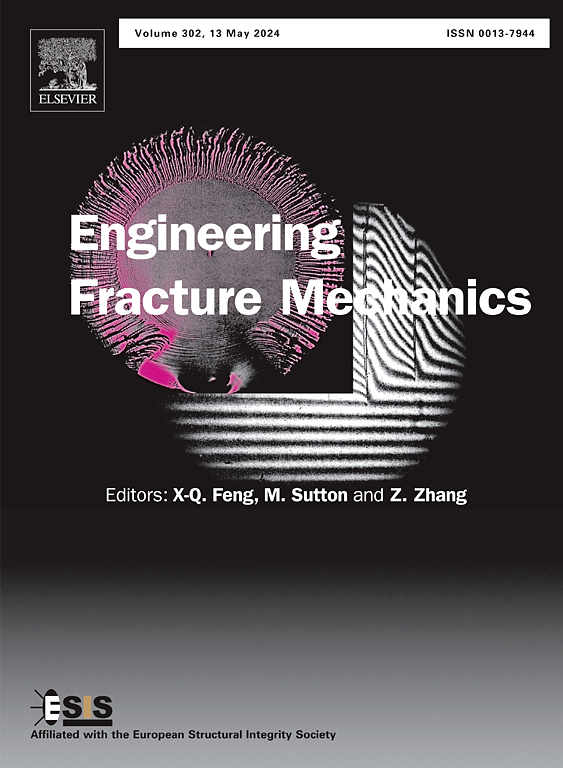Numerical investigation on the fragmentation behaviour of hard rock with a pre-existing crack under TBM cutter using cohesive zone model
IF 4.7
2区 工程技术
Q1 MECHANICS
引用次数: 0
Abstract
This paper presents a numerical investigation into the fragmentation behaviour of pressure-dependent rock with a pre-existing crack under a TBM cutter. To achieve this purpose, an intrinsic cohesive zone model is employed for modelling the initiation, propagation, intersection and closure of cracks. Additionally, the bilinear constitutive law for the cohesive elements is employed to consider the pressure-dependent behaviour of the hard rock with a tensile strength of 6.5 MPa. Firstly, the effectiveness of rock model is validated by comparing the numerical results with the outcomes of the uniaxial compression and triaxial compression experiments. Subsequently, the fragmentation process of the rock under the indention of an elastic cutter of TBM is simulated to numerically investigate the effects of the position and geometry of the pre-existing crack, and the confining pressure on the rock fragmentation. It is found that the depth, length and position of the pre-existing crack, as well as the confining pressure, have a significant effect on the response and fragmentation of rock , including the crack pattern, the crack area, and the contact force from the TBM cutter. Specifically, a deeper and shorter pre-existing crack farther from the contact zone leads to higher contact force and more initial cracks. Furthermore, cracks in the vicinity of the contact zone are typically induced by shear (i.e. mode-II cracks), while the cracks below the pre-existing crack are generated by tension (i.e. mode-I cracks). As the confining pressure increases, the area of the mode-II cracks increases, while the area of the mode-I ones decreases.
求助全文
约1分钟内获得全文
求助全文
来源期刊
CiteScore
8.70
自引率
13.00%
发文量
606
审稿时长
74 days
期刊介绍:
EFM covers a broad range of topics in fracture mechanics to be of interest and use to both researchers and practitioners. Contributions are welcome which address the fracture behavior of conventional engineering material systems as well as newly emerging material systems. Contributions on developments in the areas of mechanics and materials science strongly related to fracture mechanics are also welcome. Papers on fatigue are welcome if they treat the fatigue process using the methods of fracture mechanics.

 求助内容:
求助内容: 应助结果提醒方式:
应助结果提醒方式:


